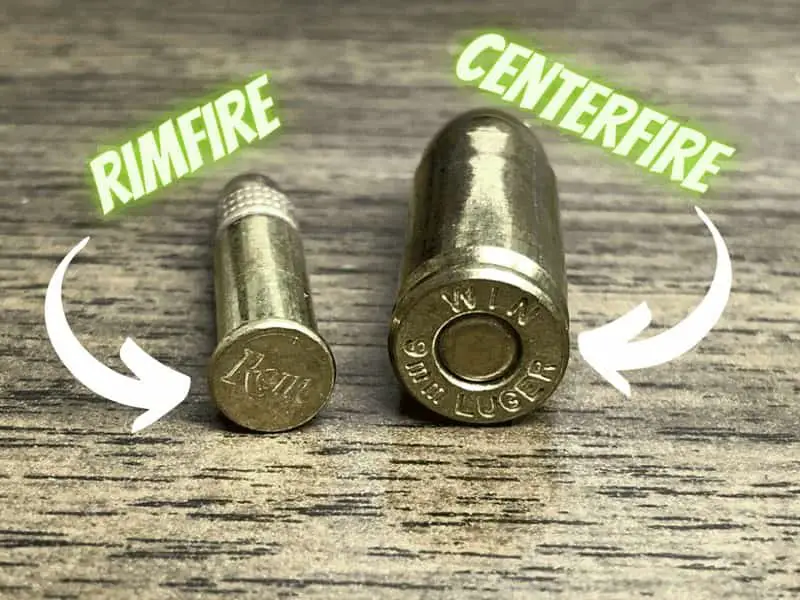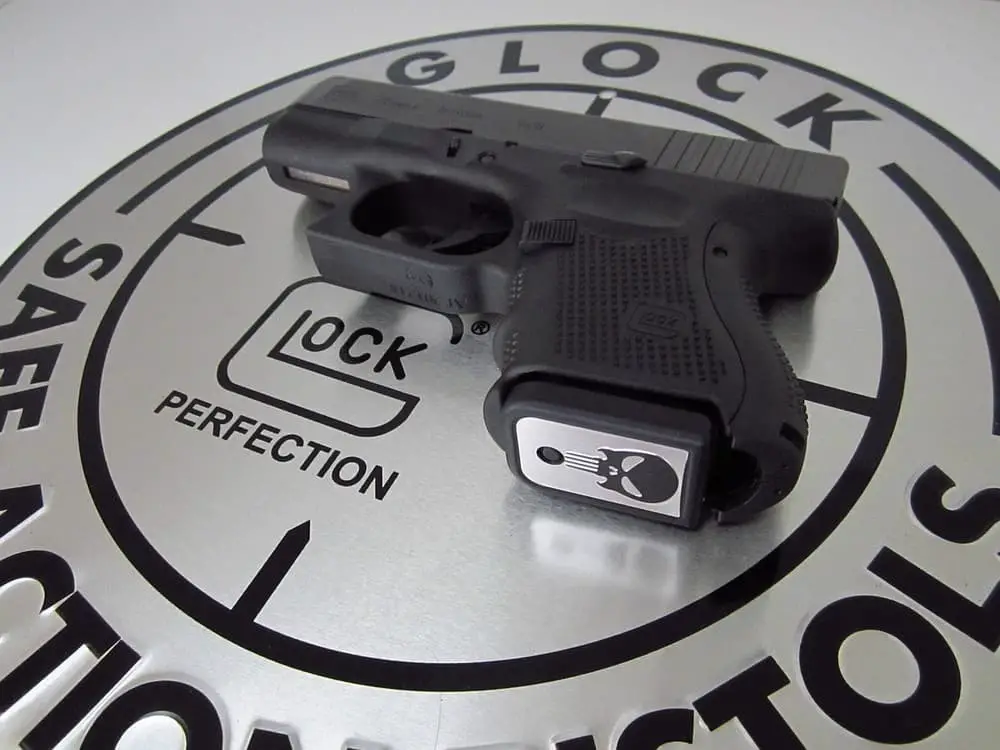
Understanding the factors that affect how a projectile performs is crucial for anyone who uses firearms, whether for hunting, self-defense, or recreational shooting.
One of the most important factors that affect how a projectile performs is its shape. Different shapes can affect how the projectile moves through the air, how it interacts with the target, and how it transfers energy upon impact.
Other factors that can affect projectile performance include the type of firearm used, the ammunition used, and the environment in which the shot is taken. By understanding these factors, shooters can make informed decisions about the type of firearm and ammunition to use, as well as the best conditions for taking a shot.
Factors Affecting Projectile Performance
Firearm Design
The design of a firearm plays a crucial role in the performance of a projectile. The bore diameter, barrel length, rifling, and the type of firearm all impact the projectile’s trajectory, velocity, and accuracy.
For example, rifles have longer barrels, which provide more time for the expanding gases to propel the projectile. This results in higher velocities and longer ranges.
Projectile Design
The design of the projectile itself also affects its performance. The shape, weight, and materials used in the construction of the projectile all play a role in its trajectory, accuracy, and penetration.
For instance, a pointed bullet has a higher ballistic coefficient, which means it retains its velocity and energy better than a round-nosed bullet. Similarly, a heavier bullet will penetrate deeper than a lighter one. The materials used in the construction of the projectile, such as lead, copper, or steel, can also impact its performance.
Ammunition Design
The design of the ammunition affects the performance of the projectile by determining the amount of propellant and the type of primer used. The cartridge case also affects the performance of the projectile by holding the bullet and propellant together until it is fired.
For example, a cartridge with a larger case capacity can hold more propellant, resulting in higher velocities and greater kinetic energy. Similarly, a primer with a hotter flame will ignite the propellant more efficiently, resulting in higher velocities.

Environmental Factors
Atmospheric Conditions
When it comes to the performance of a projectile, atmospheric conditions play a significant role. The following factors can affect the way a projectile performs:
- Atmospheric Pressure: Changes in atmospheric pressure can affect the trajectory of a projectile. As the pressure decreases, the projectile may experience less air resistance, resulting in a flatter trajectory. Conversely, as the pressure increases, the projectile may experience more air resistance, resulting in a steeper trajectory.
- Temperature: Temperature can affect the density of the air, which in turn can affect the performance of a projectile. As the temperature increases, the air density decreases, resulting in less air resistance and a flatter trajectory. Conversely, as the temperature decreases, the air density increases, resulting in more air resistance and a steeper trajectory.
- Wind: Wind can have a significant impact on the trajectory of a projectile. A headwind can slow down the projectile, while a tailwind can speed it up. Crosswinds can cause the projectile to drift off course.
- Humidity: Humidity can affect the density of the air, which can, in turn, affect the performance of a projectile. As the humidity increases, the air density decreases, resulting in less air resistance and a flatter trajectory. Conversely, as the humidity decreases, the air density increases, resulting in more air resistance and a steeper trajectory.
Hunting Environment
In addition to atmospheric conditions, the hunting environment can also affect the performance of a projectile. The following factors can play a role:
- Terrain: The terrain can affect the trajectory of a projectile. For example, shooting uphill or downhill can affect the trajectory of a projectile, as can shooting through brush or other obstacles.
- Distance: The distance between the shooter and the target can affect the accuracy of a shot. The farther the distance, the more the projectile will be affected by gravity, wind, and other factors.
Have you ever thought about buying ammo online?

I’m telling you it’s so easy with Lucky Gunner! The ammo shown on their site is guaranteed to be in stock and will ship fast. I heartily endorse Lucky Gunner and so do their many customers.
“Okay, so far I’ve dealt twice with LuckyGunner, and all I can say is, I LOVE YOUR COMPANY!!!!
Imagine: only items in stock are advertised. Who’da thunk, eh? The more highly advertised ones – Cheaper Than Dirt, Cabela’s, et. al. – will put you on backorder forever and a day. But LuckyGunner – I ordered 500 shells of .45 ACP (hard to get in this “shortage”) – and there it was at my address. No backorders, no bull. Business as it should be.
Yes, I’m telling my friends! I’m constantly writing down your addy on bits of paper (and running out of the latter), spreading the joyous news, “No backorders! No bull! Try LuckyGunner.com, you won’t be sorry!” Thank you for being there for an ammo-starved public. And, thanks for the SUPERB customer service.”
— Walter J., Silverdale, WA —


Jason Huskey
Owner of CCWClasses.net
Jason Huskey is a family man with three kids and a wonderful wife. He’s always starting new hobbies, but his true passion lies in shooting sports. Jason has been a CCW license holder for over 10 years and carries every day. In addition to firearms, he also enjoys playing guitar and writing songs. He tries to live by the Christian values he believes in.
More things you might enjoy…
Can a 38 Special Shoot 357 Rounds?
Image by MikeGunner from Pixabay I’ve long since discovered that very few activities give me the same thrill and sense of security as firing a gun. As a gun owner and enthusiast, I’ve always been curious about which guns can shoot which kinds of ammunition. I have a Derringer five-shot revolver that uses .22 rounds.…
Who Makes the Most Popular Brands of Ammo
If you are here to figure out who makes Herter’s ammo just look below the following table for a more thorough answer. If you are looking for a specific type of ammo, then you need to start by figuring out who makes it. There are lots of options for ammunition and each type of bullet…
What Does Full Metal Jacket Mean?
If you have heard the term full metal jacket, then you might be wondering what this means. I know that growing up, I heard this term a lot. I dismissed it as some sort of saying or cliche. Eventually, I decided that I needed to figure out what people meant when they use this term.…
How Often Should You Clean Your Gun?
After purchasing a firearm, you might wonder how often you should clean your gun. The truth is that it largely depends on how often you use it and where you live. Keep reading to learn more. How Often Should You Clean Your Gun? The short answer: do a light cleaning after every shooting session and…
What Is The Main Difference Between Centerfire And Rimfire Ammunition?
Rimfire vs Centerfire Everyone has to start somewhere. If you’re new to guns, learning the difference between rimfire and centerfire ammunition is important. Let me backtrack a moment. The first time I went out on the gun range, I had zero idea that there were different types of ammo for different types of weapons. All I knew…
Continue Reading What Is The Main Difference Between Centerfire And Rimfire Ammunition?
How Should You Hold a Handgun for Maximum Accuracy?
Whether it’s for sport or you find yourself in a defensive situation where you need to use a handgun, how you hold it will significantly affect your accuracy. Developing your handgun techniques will help you become a better shot and keep you safe. Read on to learn the answer to the question: How should you…
Continue Reading How Should You Hold a Handgun for Maximum Accuracy?
What Is Stippling On A Gun?
Hey, would you like a more firm grip on your gun? Would that help you shoot better? Well that is what stippling is for. Stippling is a modification to the grip that makes it, well, more grippy. It is done by sanding off the original finish and then using a hot soldering iron to make…
What Is A Centerfire Pistol?
To answer the question: “What Is A Centerfire Pistol?”, you must first understand that there are two main types of ammunition: Centerfire Rimfire These ammo categorizations are based on where the firing pin hits the back of the bullet to make it fire. A centerfire pistol is one where the firing pin strikes the center…
Is It Bad To Dry Fire A Glock?
There are loads of myths and assumptions surrounding handguns. If you grew up around guns, you probably heard some of these myths. Today, we will answer the question: Is it bad to dry fire a Glock. The Quick Answer Dry firing modern centerfire guns is completely fine (this includes most Glocks). The firing pin does…
What Is The Sight Picture?
When you first became interested in shooting you probably heard the terms sight picture and sight alignment being thrown around. Most people tend to use the two terms interchangeably; however, they do not mean the same thing. In this guide, I will make a clear distinction between sight picture and sight alignment. To master any new trade, you must…
What is Ball Ammo
When you hear the term “ball ammo” you may be picturing an actual ball. While the term did originate from ball shaped ammo, that’s not what it means today. Most ball ammo today is cylindrical in shape. It will have a lead core coated with copper. Keep reading to learn all about the history and…










